
List of Jewish Nobel laureates
Encyclopedia
The Nobel Prize
is an annual, international prize first awarded in 1901 for achievements in Physics
, Chemistry
, Physiology or Medicine
, Literature
, and Peace
. An associated prize in Economics
has been awarded since 1969. Nobel Prizes have been awarded to over 800 individuals, of whom at least 20% were Jews
.
Jews have been the recipients of all six awards. The first Jewish recipient, Adolf von Baeyer
, was awarded the prize in Chemistry in 1905. The most recent, Ralph Marvin Steinman and Bruce Beutler (Physiology or Medicine), Saul Perlmutter
and Adam Riess
(Physics), and Dan Shechtman
(Chemistry), were awarded their prizes in 2011.
Some Jewish laureates, including Elie Wiesel
(1986 Peace laureate) and Walter Kohn
(1998 Chemistry laureate), are Holocaust
survivors. The oldest ever Nobel laureate was Leonid Hurwicz
, a Polish-American Jew who received the 2007 prize in Economics when he was 90 years old. Rita Levi-Montalcini
is the oldest living Nobel laureate and the first ever to reach a 100th birthday. Boris Pasternak
, the 1958 Literature laureate, was forced to decline the prize.
in 1938 and in 1939. The fourth was Boris Pasternak
, a Russian Jew. Pasternak was named the winner of the prize for Literature in 1958. He initially accepted the award, but—after intense pressure from Soviet authorities—subsequently declined it.
Nobel Prize
The Nobel Prizes are annual international awards bestowed by Scandinavian committees in recognition of cultural and scientific advances. The will of the Swedish chemist Alfred Nobel, the inventor of dynamite, established the prizes in 1895...
is an annual, international prize first awarded in 1901 for achievements in Physics
Nobel Prize in Physics
The Nobel Prize in Physics is awarded once a year by the Royal Swedish Academy of Sciences. It is one of the five Nobel Prizes established by the will of Alfred Nobel in 1895 and awarded since 1901; the others are the Nobel Prize in Chemistry, Nobel Prize in Literature, Nobel Peace Prize, and...
, Chemistry
Nobel Prize in Chemistry
The Nobel Prize in Chemistry is awarded annually by the Royal Swedish Academy of Sciences to scientists in the various fields of chemistry. It is one of the five Nobel Prizes established by the will of Alfred Nobel in 1895, awarded for outstanding contributions in chemistry, physics, literature,...
, Physiology or Medicine
Nobel Prize in Physiology or Medicine
The Nobel Prize in Physiology or Medicine administered by the Nobel Foundation, is awarded once a year for outstanding discoveries in the field of life science and medicine. It is one of five Nobel Prizes established in 1895 by Swedish chemist Alfred Nobel, the inventor of dynamite, in his will...
, Literature
Nobel Prize in Literature
Since 1901, the Nobel Prize in Literature has been awarded annually to an author from any country who has, in the words from the will of Alfred Nobel, produced "in the field of literature the most outstanding work in an ideal direction"...
, and Peace
Nobel Peace Prize
The Nobel Peace Prize is one of the five Nobel Prizes bequeathed by the Swedish industrialist and inventor Alfred Nobel.-Background:According to Nobel's will, the Peace Prize shall be awarded to the person who...
. An associated prize in Economics
Nobel Memorial Prize in Economic Sciences
The Nobel Memorial Prize in Economic Sciences, commonly referred to as the Nobel Prize in Economics, but officially the Sveriges Riksbank Prize in Economic Sciences in Memory of Alfred Nobel , is an award for outstanding contributions to the field of economics, generally regarded as one of the...
has been awarded since 1969. Nobel Prizes have been awarded to over 800 individuals, of whom at least 20% were Jews
Jews
The Jews , also known as the Jewish people, are a nation and ethnoreligious group originating in the Israelites or Hebrews of the Ancient Near East. The Jewish ethnicity, nationality, and religion are strongly interrelated, as Judaism is the traditional faith of the Jewish nation...
.
Jews have been the recipients of all six awards. The first Jewish recipient, Adolf von Baeyer
Adolf von Baeyer
Johann Friedrich Wilhelm Adolf von Baeyer was a German chemist who synthesized indigo, and was the 1905 recipient of the Nobel Prize in Chemistry. Born in Berlin, he initially studied mathematics and physics at Berlin University before moving to Heidelberg to study chemistry with Robert Bunsen...
, was awarded the prize in Chemistry in 1905. The most recent, Ralph Marvin Steinman and Bruce Beutler (Physiology or Medicine), Saul Perlmutter
Saul Perlmutter
Saul Perlmutter is an American astrophysicist at the Lawrence Berkeley National Laboratory and a professor of physics at the University of California, Berkeley. He is a member of the American Academy of Arts & Sciences, and was elected a Fellow of the American Association for the Advancement of...
and Adam Riess
Adam Riess
Adam Guy Riess is an American astrophysicist at Johns Hopkins University and the Space Telescope Science Institute and is widely known for his research in using supernovae as Cosmological Probes. Riess shared both the 2006 Shaw Prize in Astronomy and the 2011 Nobel Prize in Physics with Saul...
(Physics), and Dan Shechtman
Dan Shechtman
Dan Shechtman is the Philip Tobias Professor of Materials Science at the Technion – Israel Institute of Technology, an Associate of the US Department of Energy's Ames Laboratory, and Professor of Materials Science at Iowa State University. On April 8, 1982, while on sabbatical at the U.S...
(Chemistry), were awarded their prizes in 2011.
Some Jewish laureates, including Elie Wiesel
Elie Wiesel
Sir Eliezer "Elie" Wiesel KBE; born September 30, 1928) is a Hungarian-born Jewish-American writer, professor, political activist, Nobel Laureate, and Holocaust survivor. He is the author of 57 books, including Night, a work based on his experiences as a prisoner in the Auschwitz, Buna, and...
(1986 Peace laureate) and Walter Kohn
Walter Kohn
Walter Kohn is an Austrian-born American theoretical physicist.He was awarded, with John Pople, the Nobel Prize in chemistry in 1998. The award recognized their contributions to the understandings of the electronic properties of materials...
(1998 Chemistry laureate), are Holocaust
The Holocaust
The Holocaust , also known as the Shoah , was the genocide of approximately six million European Jews and millions of others during World War II, a programme of systematic state-sponsored murder by Nazi...
survivors. The oldest ever Nobel laureate was Leonid Hurwicz
Leonid Hurwicz
Leonid "Leo" Hurwicz was a Russian-born American economist and mathematician. His nationality of origin was Polish. He was Jewish. He originated incentive compatibility and mechanism design, which show how desired outcomes are achieved in economics, social science and political science...
, a Polish-American Jew who received the 2007 prize in Economics when he was 90 years old. Rita Levi-Montalcini
Rita Levi-Montalcini
Rita Levi-Montalcini , Knight Grand Cross is an Italian neurologist who, together with colleague Stanley Cohen, received the 1986 Nobel Prize in Physiology or Medicine for their discovery of nerve growth factor...
is the oldest living Nobel laureate and the first ever to reach a 100th birthday. Boris Pasternak
Boris Pasternak
Boris Leonidovich Pasternak was a Russian language poet, novelist, and literary translator. In his native Russia, Pasternak's anthology My Sister Life, is one of the most influential collections ever published in the Russian language...
, the 1958 Literature laureate, was forced to decline the prize.
Literature
| Year | Laureate | Country | Rationale | |
|---|---|---|---|---|
| 1910 | 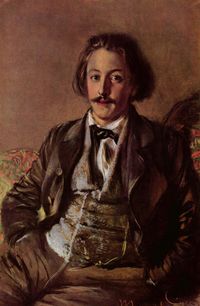 |
Paul Heyse | Germany | "as a tribute to the consummate artistry, permeated with idealism, which he has demonstrated during his long productive career as a lyric poet, dramatist, novelist and writer of world-renowned short stories" |
| 1927 | 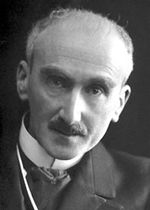 |
Henri Bergson Henri Bergson Henri-Louis Bergson was a major French philosopher, influential especially in the first half of the 20th century. Bergson convinced many thinkers that immediate experience and intuition are more significant than rationalism and science for understanding reality.He was awarded the 1927 Nobel Prize... |
France | "in recognition of his rich and vitalizing ideas and the brilliant skill with which they have been presented" |
| 1958 | Boris Pasternak Boris Pasternak Boris Leonidovich Pasternak was a Russian language poet, novelist, and literary translator. In his native Russia, Pasternak's anthology My Sister Life, is one of the most influential collections ever published in the Russian language... |
Soviet Union | "for his important achievement both in contemporary lyrical poetry and in the field of the great Russian epic tradition" | |
| 1966 | 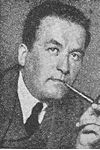 |
Shmuel Yosef Agnon Shmuel Yosef Agnon Shmuel Yosef Agnon , was a Nobel Prize laureate writer and was one of the central figures of modern Hebrew fiction. In Hebrew, he is known by the acronym Shai Agnon . In English, his works are published under the name S. Y. Agnon.Agnon was born in Galicia, Austro-Hungarian Empire... |
Israel | "for his profoundly characteristic narrative art with motifs from the life of the Jewish people" |
 |
Nelly Sachs Nelly Sachs Nelly Sachs was a Jewish German poet and playwright whose experiences resulting from the rise of the Nazis in World War II Europe transformed her into a poignant spokeswoman for the grief and yearnings of her fellow Jews... |
Germany | "for her outstanding lyrical and dramatic writing, which interprets Israel's destiny with touching strength" | |
| 1976 | 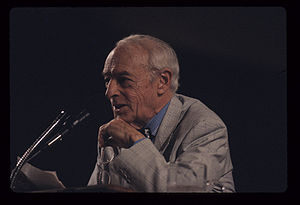 |
Saul Bellow Saul Bellow Saul Bellow was a Canadian-born Jewish American writer. For his literary contributions, Bellow was awarded the Pulitzer Prize, the Nobel Prize for Literature, and the National Medal of Arts... |
United States | "for the human understanding and subtle analysis of contemporary culture that are combined in his work" |
| 1978 | Isaac Bashevis Singer Isaac Bashevis Singer Isaac Bashevis Singer – July 24, 1991) was a Polish Jewish American author noted for his short stories. He was one of the leading figures in the Yiddish literary movement, and received the Nobel Prize in Literature in 1978... |
United States | "for his impassioned narrative art which, with roots in a Polish-Jewish cultural tradition, brings universal human conditions to life" | |
| 1981 | Elias Canetti Elias Canetti Elias Canetti was a Bulgarian-born modernist novelist, playwright, memoirist, and non-fiction writer. He wrote in German and won the Nobel Prize in Literature in 1981, "for writings marked by a broad outlook, a wealth of ideas and artistic power".-Life:... |
United Kingdom | "for writings marked by a broad outlook, a wealth of ideas and artistic power" | |
| 1987 | Joseph Brodsky Joseph Brodsky Iosif Aleksandrovich Brodsky , was a Russian poet and essayist.In 1964, 23-year-old Brodsky was arrested and charged with the crime of "social parasitism" He was expelled from the Soviet Union in 1972 and settled in America with the help of W. H. Auden and other supporters... |
United States | "for an all-embracing authorship, imbued with clarity of thought and poetic intensity" | |
| 1991 | Nadine Gordimer Nadine Gordimer Nadine Gordimer is a South African writer and political activist. She was awarded the 1991 Nobel Prize in Literature when she was recognised as a woman "who through her magnificent epic writing has – in the words of Alfred Nobel – been of very great benefit to humanity".Her writing has long dealt... |
South Africa | "who through her magnificent epic writing has – in the words of Alfred Nobel – been of very great benefit to humanity" | |
| 2002 | _hungarian_writer_ii._by_csaba_segesvri.jpg) |
Imre Kertész Imre Kertész Imre Kertész is a Hungarian Jewish author, Holocaust concentration camp survivor, and winner of the Nobel Prize in Literature in 2002 "for writing that upholds the fragile experience of the individual against the barbaric arbitrariness of history".... |
Hungary | "for writing that upholds the fragile experience of the individual against the barbaric arbitrariness of history" |
| 2004 | 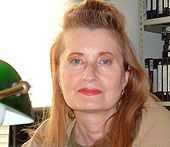 |
Elfriede Jelinek Elfriede Jelinek Elfriede Jelinek is an Austrian playwright and novelist. She was awarded the Nobel Prize in Literature in 2004 for her "musical flow of voices and counter-voices in novels and plays that, with extraordinary linguistic zeal, reveal the absurdity of society's clichés and their subjugating power."-... |
Austria | "for her musical flow of voices and counter-voices in novels and plays that with extraordinary linguistic zeal reveal the absurdity of society's clichés and their subjugating power" |
| 2005 | Harold Pinter Harold Pinter Harold Pinter, CH, CBE was a Nobel Prize–winning English playwright and screenwriter. One of the most influential modern British dramatists, his writing career spanned more than 50 years. His best-known plays include The Birthday Party , The Homecoming , and Betrayal , each of which he adapted to... |
United Kingdom | "who in his plays uncovers the precipice under everyday prattle and forces entry into oppression's closed rooms" | |
Chemistry
| Year | Laureate | Country | Rationale | |
|---|---|---|---|---|
| 1905 | .jpg) |
Adolf von Baeyer Adolf von Baeyer Johann Friedrich Wilhelm Adolf von Baeyer was a German chemist who synthesized indigo, and was the 1905 recipient of the Nobel Prize in Chemistry. Born in Berlin, he initially studied mathematics and physics at Berlin University before moving to Heidelberg to study chemistry with Robert Bunsen... |
Germany | "[for] the advancement of organic chemistry and the chemical industry, through his work on organic dyes Indigo dye Indigo dye is an organic compound with a distinctive blue color . Historically, indigo was a natural dye extracted from plants, and this process was important economically because blue dyes were once rare. Nearly all indigo dye produced today — several thousand tons each year — is synthetic... and hydroaromatic compounds" |
| 1906 |  |
Henri Moissan Henri Moissan Ferdinand Frederick Henri Moissan was a French chemist who won the 1906 Nobel Prize in Chemistry for his work in isolating fluorine from its compounds.-Biography:... |
France | "[for his] investigation and isolation of the element fluorine Fluorine Fluorine is the chemical element with atomic number 9, represented by the symbol F. It is the lightest element of the halogen column of the periodic table and has a single stable isotope, fluorine-19. At standard pressure and temperature, fluorine is a pale yellow gas composed of diatomic... , and for [the] electric furnace Electric arc furnace An electric arc furnace is a furnace that heats charged material by means of an electric arc.Arc furnaces range in size from small units of approximately one ton capacity up to about 400 ton units used for secondary steelmaking... called after him" |
| 1910 |  |
Otto Wallach Otto Wallach Otto Wallach was a German chemist and recipient of the 1910 Nobel prize in Chemistry for his work on alicyclic compounds.-Biography:... |
Germany | "[for] his services to organic chemistry and the chemical industry by his pioneer work in the field of alicyclic compound Alicyclic compound An alicyclic compound is an organic compound that is both aliphatic and cyclic. They contain one or more all-carbon rings which may be either saturated or unsaturated, but do not have aromatic character... s" |
| 1915 | 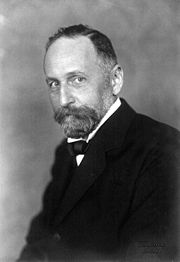 |
Richard Willstätter Richard Willstätter Richard Martin Willstätter was a German organic chemist whose study of the structure of plant pigments, chlorophyll included, won him the 1915 Nobel Prize for Chemistry. Willstätter invented paper chromatography independently of Mikhail Tsvet.-Biography:Willstätter was born in to a Jewish family... |
Germany | "for his researches on plant pigments, especially chlorophyll Chlorophyll Chlorophyll is a green pigment found in almost all plants, algae, and cyanobacteria. Its name is derived from the Greek words χλωρος, chloros and φύλλον, phyllon . Chlorophyll is an extremely important biomolecule, critical in photosynthesis, which allows plants to obtain energy from light... " |
| 1918 |  |
Fritz Haber Fritz Haber Fritz Haber was a German chemist, who received the Nobel Prize in Chemistry in 1918 for his development for synthesizing ammonia, important for fertilizers and explosives. Haber, along with Max Born, proposed the Born–Haber cycle as a method for evaluating the lattice energy of an ionic solid... |
Germany | "for the synthesis of ammonia Haber process The Haber process, also called the Haber–Bosch process, is the nitrogen fixation reaction of nitrogen gas and hydrogen gas, over an enriched iron or ruthenium catalyst, which is used to industrially produce ammonia.... from its elements" |
| 1943 | 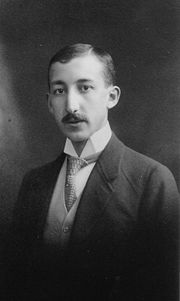 |
George de Hevesy George de Hevesy George Charles de Hevesy, Georg Karl von Hevesy, was a Hungarian radiochemist and Nobel laureate, recognized in 1943 for his key role in the development of radioactive tracers to study chemical processes such as in the metabolism of animals.- Early years :Hevesy György was born in Budapest,... |
Hungary | "for his work on the use of isotopes as tracers Radioactive tracer A radioactive tracer, also called a radioactive label, is a substance containing a radioisotope that is used to measure the speed of chemical processes and to track the movement of a substance through a natural system such as a cell or tissue... in the study of chemical processes" |
| 1961 |  |
Melvin Calvin Melvin Calvin Melvin Ellis Calvin was an American chemist most famed for discovering the Calvin cycle along with Andrew Benson and James Bassham, for which he was awarded the 1961 Nobel Prize in Chemistry. He spent most of his five-decade career at the University of California, Berkeley.- Life :Calvin was born... |
United States | "for his research on the carbon dioxide assimilation in plants Calvin cycle The Calvin cycle or Calvin–Benson-Bassham cycle or reductive pentose phosphate cycle or C3 cycle or CBB cycle is a series of biochemical redox reactions that take place in the stroma of chloroplasts in photosynthetic organisms... " |
| 1962 | Max Perutz Max Perutz Max Ferdinand Perutz, OM, CH, CBE, FRS was an Austrian-born British molecular biologist, who shared the 1962 Nobel Prize for Chemistry with John Kendrew, for their studies of the structures of hemoglobin and globular proteins... |
United Kingdom | "for their studies of the structures of globular proteins Myoglobin Myoglobin is an iron- and oxygen-binding protein found in the muscle tissue of vertebrates in general and in almost all mammals. It is related to hemoglobin, which is the iron- and oxygen-binding protein in blood, specifically in the red blood cells. The only time myoglobin is found in the... " |
|
| 1972 |  |
Christian B. Anfinsen Christian B. Anfinsen Christian Boehmer Anfinsen, Jr. was an American biochemist. He shared the 1972 Nobel Prize in Chemistry with Stanford Moore and William Howard Stein for work on ribonuclease, especially concerning the connection between the amino acid sequence and the biologically active conformation... |
United States | "for his work on ribonuclease Ribonuclease Ribonuclease is a type of nuclease that catalyzes the degradation of RNA into smaller components. Ribonucleases can be divided into endoribonucleases and exoribonucleases, and comprise several sub-classes within the EC 2.7 and 3.1 classes of enzymes.-Function:All organisms studied contain... , especially concerning the connection between the amino acid Amino acid Amino acids are molecules containing an amine group, a carboxylic acid group and a side-chain that varies between different amino acids. The key elements of an amino acid are carbon, hydrogen, oxygen, and nitrogen... sequence and the biologically active conformation" |
| William Howard Stein William Howard Stein -External links:* Stein's * Stein's Nobel Lecture... |
United States | "for their contribution to the understanding of the connection between chemical structure and catalytic activity of the active centre of the ribonuclease molecule" | ||
| 1977 | Ilya Prigogine Ilya Prigogine Ilya, Viscount Prigogine was a Russian-born naturalized Belgian physical chemist and Nobel Laureate noted for his work on dissipative structures, complex systems, and irreversibility.-Biography :... |
Belgium | "for his contributions to non-equilibrium thermodynamics, particularly the theory of dissipative structures" | |
| 1979 | Herbert C. Brown Herbert C. Brown Herbert Charles Brown was a chemist and Nobel Prize in Chemistry laureate for his work with organoboranes.... |
United States | "for their development of the use of boron- and phosphorus-containing compounds, respectively, into important reagents in organic synthesis Wittig reaction The Wittig reaction is a chemical reaction of an aldehyde or ketone with a triphenyl phosphonium ylide to give an alkene and triphenylphosphine oxide.... " |
|
| 1980 | 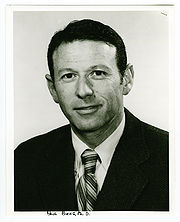 |
Paul Berg Paul Berg Paul Berg is an American biochemist and professor emeritus at Stanford University. He was the recipient of the Nobel Prize in Chemistry in 1980, along with Walter Gilbert and Frederick Sanger. The award recognized their contributions to basic research involving nucleic acids... |
United States | "for his fundamental studies of the biochemistry of nucleic acids, with particular regard to recombinant-DNA Recombinant DNA Recombinant DNA molecules are DNA sequences that result from the use of laboratory methods to bring together genetic material from multiple sources, creating sequences that would not otherwise be found in biological organisms... " |
 |
Walter Gilbert Walter Gilbert Walter Gilbert is an American physicist, biochemist, molecular biology pioneer, and Nobel laureate.-Biography:Gilbert was born in Boston, Massachusetts, on March 21, 1932... |
United States | "for their contributions concerning the determination of base sequences DNA sequencing DNA sequencing includes several methods and technologies that are used for determining the order of the nucleotide bases—adenine, guanine, cytosine, and thymine—in a molecule of DNA.... in nucleic acids" |
|
| 1981 |  |
Roald Hoffmann Roald Hoffmann Roald Hoffmann is an American theoretical chemist who won the 1981 Nobel Prize in Chemistry. He currently teaches at Cornell University in Ithaca, New York.-Escape from the Holocaust:... |
United States | "for their theories, developed independently, concerning the course of chemical reactions" |
| 1982 | Aaron Klug Aaron Klug Sir Aaron Klug, OM, PRS is a Lithuanian-born British chemist and biophysicist, and winner of the 1982 Nobel Prize in Chemistry for his development of crystallographic electron microscopy and his structural elucidation of biologically important nucleic acid-protein complexes.-Biography:Klug was... |
United Kingdom | "for his development of crystallographic electron microscopy Electron crystallography Electron crystallography is a method to determine the arrangement of atoms in solids using a transmission electron microscope .- Comparison with X-ray crystallography :... and his structural elucidation of biologically important nucleic acid-protein complexes Chromatin Chromatin is the combination of DNA and proteins that make up the contents of the nucleus of a cell. The primary functions of chromatin are; to package DNA into a smaller volume to fit in the cell, to strengthen the DNA to allow mitosis and meiosis and prevent DNA damage, and to control gene... " |
|
| 1985 | Jerome Karle Jerome Karle Jerome Karle, born Jerome Karfunkel is an American physical chemist. Jointly with Herbert A. Hauptman, he was awarded the Nobel Prize in Chemistry in 1985, for the direct analysis of crystal structures using X-ray scattering techniques.-Early life and education:Karle was born in New York City on... |
United States | "for their outstanding achievements in developing direct methods for the determination of crystal structures" | |
| Herbert A. Hauptman Herbert A. Hauptman Herbert Aaron Hauptman was an American mathematician and Nobel laureate. He pioneered and developed a mathematical method that has changed the whole field of chemistry and opened a new era in research in determination of molecular structures of crystallized materials... |
United States | |||
| 1989 | Sidney Altman Sidney Altman Sidney Altman is a Canadian American molecular biologist, who is currently the Sterling Professor of Molecular, Cellular, and Developmental Biology and Chemistry at Yale University. In 1989 he shared the Nobel Prize in Chemistry with Thomas R... |
Canada United States |
"for their discovery of catalytic properties of RNA Ribozyme A ribozyme is an RNA molecule with a well defined tertiary structure that enables it to catalyze a chemical reaction. Ribozyme means ribonucleic acid enzyme. It may also be called an RNA enzyme or catalytic RNA. Many natural ribozymes catalyze either the hydrolysis of one of their own... " |
|
| 1992 | 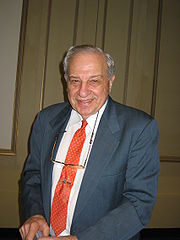 |
Rudolph A. Marcus Rudolph A. Marcus Rudolph "Rudy" Arthur Marcus is a Canadian-born chemist who received the 1992 Nobel Prize in Chemistry for his theory of electron transfer. Marcus theory, named after him, provides a thermodynamic and kinetic framework for describing one electron outer-sphere electron transfer.He was born in... |
United States | "for his contributions to the theory of electron transfer reactions Marcus Theory Marcus Theory is a theory originally developed by Rudolph A. Marcus, starting in 1956, to explain the rates of electron transfer reactions – the rate at which an electron can move or jump from one chemical species to another... in chemical systems" |
| 1994 | George Andrew Olah George Andrew Olah George Andrew Olah is an American chemist. His research involves the generation and reactivity of carbocations via superacids. For this research, Olah was awarded a Nobel Prize in Chemistry in 1994... |
Hungary | "for his contribution to carbocation Carbocation A carbocation is an ion with a positively-charged carbon atom. The charged carbon atom in a carbocation is a "sextet", i.e. it has only six electrons in its outer valence shell instead of the eight valence electrons that ensures maximum stability . Therefore carbocations are often reactive,... chemistry" |
|
| 1998 |  |
Walter Kohn Walter Kohn Walter Kohn is an Austrian-born American theoretical physicist.He was awarded, with John Pople, the Nobel Prize in chemistry in 1998. The award recognized their contributions to the understandings of the electronic properties of materials... |
United States | "for his development of the density-functional theory Density functional theory Density functional theory is a quantum mechanical modelling method used in physics and chemistry to investigate the electronic structure of many-body systems, in particular atoms, molecules, and the condensed phases. With this theory, the properties of a many-electron system can be determined by... " |
| 2000 | Alan J. Heeger Alan J. Heeger Alan Jay Heeger is an American physicist, academic and Nobel Prize laureate in chemistry.Heeger was born in Sioux City, Iowa to a Jewish family. He earned a B.S. in physics and mathematics from the University of Nebraska-Lincoln in 1957, and a Ph.D in physics from the University of California,... |
United States | "for the discovery and development of conductive polymer Conductive polymer Conductive polymers or, more precisely, intrinsically conducting polymers are organic polymers that conduct electricity. Such compounds may have metallic conductivity or can be semiconductors. The biggest advantage of conductive polymers is their processability, mainly by dispersion. Conductive... s" |
|
| 2004 |  |
Aaron Ciechanover Aaron Ciechanover Aaron Ciechanover is an Israeli biologist, and Nobel laureate in Chemistry.- Biography :Ciechanover was born in Haifa, British mandate of Palestine, a year before the establishment of the State of Israel... |
Israel Israel The State of Israel is a parliamentary republic located in the Middle East, along the eastern shore of the Mediterranean Sea... |
"for the discovery of ubiquitin-mediated protein degradation" |
 |
Avram Hershko Avram Hershko Avram Hershko is a Hungarian-Israeli biochemist and Nobel laureate in Chemistry.-Biography:Born Herskó Ferenc in Karcag, Hungary, Hershko emigrated to Israel in 1950. Received his M.D. in 1965 and his Ph.D in 1969 from the Hebrew University-Hadassah Medical School, Jerusalem, Israel... |
Israel | ||
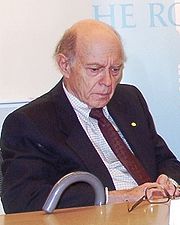 |
Irwin Rose Irwin Rose Irwin A. Rose is an American biologist. Along with Aaron Ciechanover and Avram Hershko, he was awarded the 2004 Nobel Prize in Chemistry for the discovery of ubiquitin-mediated protein degradation.-Biography:... |
United States | ||
| 2006 | 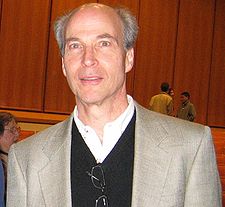 |
Roger D. Kornberg Roger D. Kornberg Roger David Kornberg is an American biochemist and professor of structural biology at Stanford University School of Medicine.Kornberg was awarded the Nobel Prize in Chemistry in 2006 for his studies of the process by which genetic information from DNA is copied to RNA, "the molecular basis of... |
United States | "for his studies of the molecular basis of eukaryotic transcription Eukaryotic transcription Eukaryotic transcription is more complex than prokaryotic transcription. For instance, in eukaryotes the genetic material , and therefore transcription, is primarily localized to the nucleus, where it is separated from the cytoplasm by the nuclear membrane... " |
| 2008 |  |
Martin Chalfie Martin Chalfie Martin Chalfie is an American scientist. He is the William R. Kenan, Jr. Professor of Biological Sciences at Columbia University, where he is also chair of the department of biological sciences. He shared the 2008 Nobel Prize in Chemistry along with Osamu Shimomura and Roger Y. Tsien "for the... |
United States | "for the discovery and development of the green fluorescent protein Green fluorescent protein The green fluorescent protein is a protein composed of 238 amino acid residues that exhibits bright green fluorescence when exposed to blue light. Although many other marine organisms have similar green fluorescent proteins, GFP traditionally refers to the protein first isolated from the... , GFP". |
| 2009 | Ada Yonath Ada Yonath Ada E. Yonath is an Israeli crystallographer best known for her pioneering work on the structure of the ribosome. She is the current director of the Helen and Milton A. Kimmelman Center for Biomolecular Structure and Assembly of the Weizmann Institute of Science. In 2009, she received the Nobel... |
Israel | "for studies of the structure and function of the ribosome Ribosome A ribosome is a component of cells that assembles the twenty specific amino acid molecules to form the particular protein molecule determined by the nucleotide sequence of an RNA molecule.... " |
|
| 2011 | Dan Shechtman Dan Shechtman Dan Shechtman is the Philip Tobias Professor of Materials Science at the Technion – Israel Institute of Technology, an Associate of the US Department of Energy's Ames Laboratory, and Professor of Materials Science at Iowa State University. On April 8, 1982, while on sabbatical at the U.S... |
Israel | "for the discovery of quasicrystals" | |
Physiology or Medicine
| Year | Laureate | Country | Rationale | |
|---|---|---|---|---|
| 1908 | .png) |
Élie Metchnikoff | Russia | "in recognition of their work on immunity Immune system An immune system is a system of biological structures and processes within an organism that protects against disease by identifying and killing pathogens and tumor cells. It detects a wide variety of agents, from viruses to parasitic worms, and needs to distinguish them from the organism's own... " |
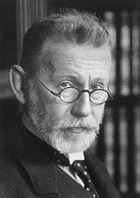 |
Paul Ehrlich Paul Ehrlich Paul Ehrlich was a German scientist in the fields of hematology, immunology, and chemotherapy, and Nobel laureate. He is noted for curing syphilis and for his research in autoimmunity, calling it "horror autotoxicus"... |
Germany | ||
| 1914 |  |
Robert Bárány Robert Bárány Robert Bárány was a Austro-Hungarian otologist. For his work on the physiology and pathology of the vestibular apparatus of the ear he received the 1914 Nobel Prize in Physiology or Medicine.- Biography :... |
Austria | "for his work on the physiology and pathology of the vestibular apparatus" |
| 1922 | Otto Fritz Meyerhof Otto Fritz Meyerhof -External links:* *... |
Germany | "for his discovery of the fixed relationship between the consumption of oxygen and the metabolism Metabolism Metabolism is the set of chemical reactions that happen in the cells of living organisms to sustain life. These processes allow organisms to grow and reproduce, maintain their structures, and respond to their environments. Metabolism is usually divided into two categories... of lactic acid Lactic acid Lactic acid, also known as milk acid, is a chemical compound that plays a role in various biochemical processes and was first isolated in 1780 by the Swedish chemist Carl Wilhelm Scheele. Lactic acid is a carboxylic acid with the chemical formula C3H6O3... in the muscle" |
|
| 1930 | 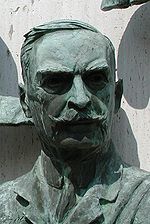 |
Karl Landsteiner Karl Landsteiner Karl Landsteiner , was an Austrian-born American biologist and physician of Jewish origin. He is noted for having first distinguished the main blood groups in 1900, having developed the modern system of classification of blood groups from his identification of the presence of agglutinins in the... |
Austria | "for his discovery of human blood groups Blood type A blood type is a classification of blood based on the presence or absence of inherited antigenic substances on the surface of red blood cells . These antigens may be proteins, carbohydrates, glycoproteins, or glycolipids, depending on the blood group system... " |
| 1931 | Otto Heinrich Warburg Otto Heinrich Warburg Otto Heinrich Warburg , son of physicist Emil Warburg, was a German physiologist, medical doctor and Nobel laureate. He served as an officer in the elite Uhlan during the First World War and won the Iron Cross for bravery. Warburg was one of the twentieth century's leading biochemists... (of Jewish descent) |
Germany | "for his discovery of the nature and mode of action of the respiratory enzyme Cytochrome Cytochromes are, in general, membrane-bound hemoproteins that contain heme groups and carry out electron transport.They are found either as monomeric proteins or as subunits of bigger enzymatic complexes that catalyze redox reactions.... " |
|
| 1936 |  |
Otto Loewi Otto Loewi Otto Loewi was a German born pharmacologist whose discovery of acetylcholine helped enhance medical therapy. The discovery earned for him the Nobel Prize in Physiology or Medicine in 1936 which he shared with Sir Henry Dale, whom he met in 1902 when spending some months in Ernest Starling's... |
Austria | "for their discoveries relating to chemical transmission of nerve impulses Neurotransmitter Neurotransmitters are endogenous chemicals that transmit signals from a neuron to a target cell across a synapse. Neurotransmitters are packaged into synaptic vesicles clustered beneath the membrane on the presynaptic side of a synapse, and are released into the synaptic cleft, where they bind to... " |
| 1944 | Joseph Erlanger Joseph Erlanger Joseph Erlanger was an American physiologist.Erlanger was born on January 5, 1874, at San Francisco, California. He completed his B.S. in chemistry from the University of California, Berkeley and completed his M.D. in 1899 from the Johns Hopkins University... |
United States | "for their discoveries relating to the highly differentiated functions of single nerve fibres" | |
| Herbert Spencer Gasser | ||||
| 1945 | Ernst Boris Chain Ernst Boris Chain Sir Ernst Boris Chain was a German-born British biochemist, and a 1945 co-recipient of the Nobel Prize for Physiology or Medicine for his work on penicillin.-Biography:... |
United Kingdom | "for the discovery of penicillin Penicillin Penicillin is a group of antibiotics derived from Penicillium fungi. They include penicillin G, procaine penicillin, benzathine penicillin, and penicillin V.... and its curative effect in various infectious disease Infectious disease Infectious diseases, also known as communicable diseases, contagious diseases or transmissible diseases comprise clinically evident illness resulting from the infection, presence and growth of pathogenic biological agents in an individual host organism... s" |
|
| 1946 | Hermann Joseph Muller Hermann Joseph Muller Hermann Joseph Muller was an American geneticist, educator, and Nobel laureate best known for his work on the physiological and genetic effects of radiation as well as his outspoken political beliefs... |
United States | "for the discovery of the production of mutations by means of X-ray X-ray X-radiation is a form of electromagnetic radiation. X-rays have a wavelength in the range of 0.01 to 10 nanometers, corresponding to frequencies in the range 30 petahertz to 30 exahertz and energies in the range 120 eV to 120 keV. They are shorter in wavelength than UV rays and longer than gamma... irradiation Irradiation Irradiation is the process by which an object is exposed to radiation. The exposure can originate from various sources, including natural sources. Most frequently the term refers to ionizing radiation, and to a level of radiation that will serve a specific purpose, rather than radiation exposure to... " |
|
| 1947 |  |
Gerty Cori Gerty Cori Gerty Theresa Cori was an American biochemist who became the third woman—and first American woman—to win a Nobel Prize in science, and the first woman to be awarded the Nobel Prize in Physiology or Medicine.Cori was born in Prague... |
United States | "for their discovery of the course of the catalytic conversion of glycogen Glycogen Glycogen is a molecule that serves as the secondary long-term energy storage in animal and fungal cells, with the primary energy stores being held in adipose tissue... " |
| 1950 | Tadeusz Reichstein Tadeus Reichstein Tadeusz Reichstein was a Polish-born Swiss chemist and Nobel laureate.Reichstein was born into a Jewish family at Włocławek, Congress Poland, and spent his early childhood at Kiev, where his father was an engineer... |
Switzerland | "for their discoveries relating to the hormone Hormone A hormone is a chemical released by a cell or a gland in one part of the body that sends out messages that affect cells in other parts of the organism. Only a small amount of hormone is required to alter cell metabolism. In essence, it is a chemical messenger that transports a signal from one... s of the adrenal cortex Adrenal cortex Situated along the perimeter of the adrenal gland, the adrenal cortex mediates the stress response through the production of mineralocorticoids and glucocorticoids, including aldosterone and cortisol respectively. It is also a secondary site of androgen synthesis.-Layers:Notably, the reticularis in... , their structure and biological effects" |
|
| 1952 | 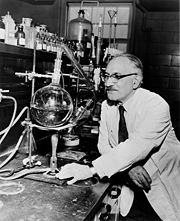 |
Selman Waksman Selman Waksman Selman Abraham Waksman was an American biochemist and microbiologist whose research into organic substances—largely into organisms that live in soil—and their decomposition promoted the discovery of Streptomycin, and several other antibiotics... |
United States | "for his discovery of streptomycin Streptomycin Streptomycin is an antibiotic drug, the first of a class of drugs called aminoglycosides to be discovered, and was the first antibiotic remedy for tuberculosis. It is derived from the actinobacterium Streptomyces griseus. Streptomycin is a bactericidal antibiotic. Streptomycin cannot be given... , the first antibiotic Antibiotic An antibacterial is a compound or substance that kills or slows down the growth of bacteria.The term is often used synonymously with the term antibiotic; today, however, with increased knowledge of the causative agents of various infectious diseases, antibiotic has come to denote a broader range of... effective against tuberculosis Tuberculosis Tuberculosis, MTB, or TB is a common, and in many cases lethal, infectious disease caused by various strains of mycobacteria, usually Mycobacterium tuberculosis. Tuberculosis usually attacks the lungs but can also affect other parts of the body... " |
| 1953 | Hans Adolf Krebs Hans Adolf Krebs Sir Hans Adolf Krebs was a German-born British physician and biochemist. Krebs is best known for his identification of two important metabolic cycles: the urea cycle and the citric acid cycle... |
United Kingdom | "for his discovery of the citric acid cycle Citric acid cycle The citric acid cycle — also known as the tricarboxylic acid cycle , the Krebs cycle, or the Szent-Györgyi-Krebs cycle — is a series of chemical reactions which is used by all aerobic living organisms to generate energy through the oxidization of acetate derived from carbohydrates, fats and... " |
|
,_biochemist_(2551001689).jpg) |
Fritz Albert Lipmann Fritz Albert Lipmann Fritz Albert Lipmann FRS was a German-American biochemist and a co-discoverer in 1945 of coenzyme A. For this, together with other research on coenzyme A, he was awarded half the Nobel Prize in Physiology or Medicine in 1953 .Lipmann was born in Königsberg, Germany to a Jewish family.Lipmann... |
United States | "for his discovery of co-enzyme A Coenzyme A Coenzyme A is a coenzyme, notable for its role in the synthesis and oxidation of fatty acids, and the oxidation of pyruvate in the citric acid cycle. All sequenced genomes encode enzymes that use coenzyme A as a substrate, and around 4% of cellular enzymes use it as a substrate... and its importance for intermediary metabolism" |
|
| 1958 | Joshua Lederberg Joshua Lederberg Joshua Lederberg ForMemRS was an American molecular biologist known for his work in microbial genetics, artificial intelligence, and the United States space program. He was just 33 years old when he won the 1958 Nobel Prize in Physiology or Medicine for discovering that bacteria can mate and... |
United States | "for his discoveries concerning genetic recombination Genetic recombination Genetic recombination is a process by which a molecule of nucleic acid is broken and then joined to a different one. Recombination can occur between similar molecules of DNA, as in homologous recombination, or dissimilar molecules, as in non-homologous end joining. Recombination is a common method... and the organization of the genetic material Gene A gene is a molecular unit of heredity of a living organism. It is a name given to some stretches of DNA and RNA that code for a type of protein or for an RNA chain that has a function in the organism. Living beings depend on genes, as they specify all proteins and functional RNA chains... of bacteria Bacteria Bacteria are a large domain of prokaryotic microorganisms. Typically a few micrometres in length, bacteria have a wide range of shapes, ranging from spheres to rods and spirals... " |
|
| 1959 | 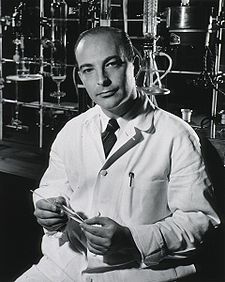 |
Arthur Kornberg Arthur Kornberg Arthur Kornberg was an American biochemist who won the Nobel Prize in Physiology or Medicine 1959 for his discovery of "the mechanisms in the biological synthesis of deoxyribonucleic acid " together with Dr. Severo Ochoa of New York University... |
United States | "for their discovery of the mechanisms in the biological synthesis of ribonucleic acid and deoxyribonucleic acid" |
| 1964 | Konrad Emil Bloch Konrad Emil Bloch Konrad Emil Bloch ForMemRS was a German American biochemist. Bloch received Nobel Prize in Medicine or Physiology in 1964 for discoveries concerning the mechanism and regulation of the cholesterol and fatty acid metabolism.-Biography:Bloch was born in Neisse in the German Empire's Prussian... |
United States | "for their discoveries concerning the mechanism and regulation of the cholesterol Cholesterol Cholesterol is a complex isoprenoid. Specifically, it is a waxy steroid of fat that is produced in the liver or intestines. It is used to produce hormones and cell membranes and is transported in the blood plasma of all mammals. It is an essential structural component of mammalian cell membranes... and fatty acid Fatty acid In chemistry, especially biochemistry, a fatty acid is a carboxylic acid with a long unbranched aliphatic tail , which is either saturated or unsaturated. Most naturally occurring fatty acids have a chain of an even number of carbon atoms, from 4 to 28. Fatty acids are usually derived from... metabolism Metabolism Metabolism is the set of chemical reactions that happen in the cells of living organisms to sustain life. These processes allow organisms to grow and reproduce, maintain their structures, and respond to their environments. Metabolism is usually divided into two categories... " |
|
| 1965 | François Jacob François Jacob François Jacob is a French biologist who, together with Jacques Monod, originated the idea that control of enzyme levels in all cells occurs through feedback on transcription. He shared the 1965 Nobel Prize in Medicine with Jacques Monod and André Lwoff.-Childhood and education:François Jacob is... |
France | "for their discoveries concerning genetic control of enzyme Transcription (genetics) Transcription is the process of creating a complementary RNA copy of a sequence of DNA. Both RNA and DNA are nucleic acids, which use base pairs of nucleotides as a complementary language that can be converted back and forth from DNA to RNA by the action of the correct enzymes... and virus synthesis Provirus A provirus is a virus genome that is integrated into the DNA of a host cell.This state can be a stage of virus replication, or a state that persists over longer periods of time as either inactive viral infections or an endogenous retrovirus. In inactive viral infections the virus will not replicate... " |
|
| André Michel Lwoff André Michel Lwoff André Michel Lwoff was a French microbiologist. He was born in Ainay-le-Château, Allier, in Auvergne, France. He joined the Institute Pasteur in Paris when he was 19 years old... |
||||
| 1967 | George Wald George Wald George Wald was an American scientist who is best known for his work with pigments in the retina. He won a share of the 1967 Nobel Prize in Physiology or Medicine with Haldan Keffer Hartline and Ragnar Granit.- Research :... |
United States | "for their discoveries concerning the primary physiological and chemical visual processes in the eye" | |
| 1968 | 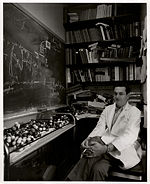 |
Marshall Warren Nirenberg Marshall Warren Nirenberg Marshall Warren Nirenberg was an American biochemist and geneticist of Jewish origin. He shared a Nobel Prize in Physiology or Medicine in 1968 with Har Gobind Khorana and Robert W. Holley for "breaking the genetic code" and describing how it operates in protein synthesis... |
United States | "for their interpretation of the genetic code Genetic code The genetic code is the set of rules by which information encoded in genetic material is translated into proteins by living cells.... and its function in protein synthesis Protein biosynthesis Protein biosynthesis is the process in which cells build or manufacture proteins. The term is sometimes used to refer only to protein translation but more often it refers to a multi-step process, beginning with amino acid synthesis and transcription of nuclear DNA into messenger RNA, which is then... " |
| 1969 | Salvador Luria | United States | "for their discoveries concerning the replication mechanism and the genetic structure of virus Virus A virus is a small infectious agent that can replicate only inside the living cells of organisms. Viruses infect all types of organisms, from animals and plants to bacteria and archaea... es" |
|
| 1970 |  |
Julius Axelrod Julius Axelrod Julius Axelrod was an American biochemist. He won a share of the Nobel Prize in Physiology or Medicine in 1970 along with Bernard Katz and Ulf von Euler... |
United States | "for their discoveries concerning the humoral transmittors in the nerve terminals Neurotransmitter Neurotransmitters are endogenous chemicals that transmit signals from a neuron to a target cell across a synapse. Neurotransmitters are packaged into synaptic vesicles clustered beneath the membrane on the presynaptic side of a synapse, and are released into the synaptic cleft, where they bind to... and the mechanism for their storage, release and inactivation" |
| Bernard Katz Bernard Katz Sir Bernard Katz, FRS was a German-born biophysicist, noted for his work on nerve biochemistry. He shared the Nobel Prize in physiology or medicine in 1970 with Julius Axelrod and Ulf von Euler... |
United Kingdom | |||
| 1972 | Gerald Edelman Gerald Edelman Gerald Maurice Edelman is an American biologist who shared the 1972 Nobel Prize in Physiology or Medicine for work with Rodney Robert Porter on the immune system. Edelman's Nobel Prize-winning research concerned discovery of the structure of antibody molecules... |
United States | "for their discoveries concerning the chemical structure of antibodies" | |
| 1975 |  |
David Baltimore David Baltimore David Baltimore is an American biologist, university administrator, and Nobel laureate in Physiology or Medicine. He served as president of the California Institute of Technology from 1997 to 2006, and is currently the Robert A. Millikan Professor of Biology at Caltech... |
United States | "for their discoveries concerning the interaction between tumor viruses and the genetic material of the cell" |
| Howard Martin Temin Howard Martin Temin Howard Martin Temin was a U.S. geneticist. Along with Renato Dulbecco and David Baltimore he discovered reverse transcriptase in the 1970s at the University of Wisconsin–Madison, for which he shared the 1975 Nobel Prize in Physiology or Medicine.-Scientific career:Temin's description of how tumor... |
United States | |||
| 1976 | Baruch Samuel Blumberg Baruch Samuel Blumberg Baruch Samuel "Barry" Blumberg was an American doctor and co-recipient of the 1976 Nobel Prize in Physiology or Medicine , and the President of the American Philosophical Society from 2005 until his death.Blumberg received the Nobel Prize for "discoveries concerning new mechanisms for the origin... |
United States | "for their discoveries concerning new mechanisms for the origin and dissemination of infectious disease Infectious disease Infectious diseases, also known as communicable diseases, contagious diseases or transmissible diseases comprise clinically evident illness resulting from the infection, presence and growth of pathogenic biological agents in an individual host organism... s" |
|
| 1977 |  |
Andrew Schally | United States | "for their discoveries concerning the peptide hormone Peptide hormone Peptide hormones are a class of peptides that are secreted into the blood stream and have endocrine functions in living animals.Like other proteins, peptide hormones are synthesized in cells from amino acids according to an mRNA template, which is itself synthesized from a DNA template inside the... production of the brain" |
| Rosalyn Sussman Yalow Rosalyn Sussman Yalow Rosalyn Sussman Yalow was an American medical physicist, and a co-winner of the 1977 Nobel Prize in Physiology or Medicine for development of the radioimmunoassay technique... |
United States | "for the development of radioimmunoassay Radioimmunoassay Radioimmunoassay is a very sensitive in vitro assay technique used to measure concentrations of antigens by use of antibodies... s of peptide hormones" |
||
| 1978 | Daniel Nathans Daniel Nathans Daniel Nathans was an American microbiologist.He was born in Wilmington, Delaware, the last of nine children born to Russian Jewish immigrant parents. During the Great Depression his father lost his small business and was unemployed for a long period of time... |
United States | "for the discovery of restriction enzyme Restriction enzyme A Restriction Enzyme is an enzyme that cuts double-stranded DNA at specific recognition nucleotide sequences known as restriction sites. Such enzymes, found in bacteria and archaea, are thought to have evolved to provide a defense mechanism against invading viruses... s and their application to problems of molecular genetics Molecular genetics Molecular genetics is the field of biology and genetics that studies the structure and function of genes at a molecular level. The field studies how the genes are transferred from generation to generation. Molecular genetics employs the methods of genetics and molecular biology... " |
|
| 1980 | Baruj Benacerraf Baruj Benacerraf Baruj Benacerraf was a Venezuelan-born American immunologist, who shared the 1980 Nobel Prize in Physiology or Medicine for the "discovery of the major histocompatibility complex genes which encode cell surface protein molecules important for the immune system's distinction between self and... |
United States | "for their discoveries concerning genetically determined structures on the cell surface Major histocompatibility complex Major histocompatibility complex is a cell surface molecule encoded by a large gene family in all vertebrates. MHC molecules mediate interactions of leukocytes, also called white blood cells , which are immune cells, with other leukocytes or body cells... that regulate immunological reactions Immune system An immune system is a system of biological structures and processes within an organism that protects against disease by identifying and killing pathogens and tumor cells. It detects a wide variety of agents, from viruses to parasitic worms, and needs to distinguish them from the organism's own... " |
|
| 1984 | César Milstein César Milstein César Milstein FRS was an Argentine biochemist in the field of antibody research. Milstein shared the Nobel Prize in Physiology or Medicine in 1984 with Niels K. Jerne and Georges Köhler.-Biography:... |
Argentina United Kingdom |
"for theories concerning the specificity in development and control of the immune system Immune system An immune system is a system of biological structures and processes within an organism that protects against disease by identifying and killing pathogens and tumor cells. It detects a wide variety of agents, from viruses to parasitic worms, and needs to distinguish them from the organism's own... and the discovery of the principle for production of monoclonal antibodies Monoclonal antibodies Monoclonal antibodies are monospecific antibodies that are the same because they are made by identical immune cells that are all clones of a unique parent cell.... " |
|
| 1985 |  |
Michael Stuart Brown Michael Stuart Brown Michael Stuart Brown is an American geneticist and Nobel Laureate. He was awarded the Nobel Prize in Physiology or Medicine with Joseph L. Goldstein in 1985 for describing the regulation of cholesterol metabolism.- Life and career :... |
United States | "for their discoveries concerning the regulation of cholesterol Cholesterol Cholesterol is a complex isoprenoid. Specifically, it is a waxy steroid of fat that is produced in the liver or intestines. It is used to produce hormones and cell membranes and is transported in the blood plasma of all mammals. It is an essential structural component of mammalian cell membranes... metabolism Metabolism Metabolism is the set of chemical reactions that happen in the cells of living organisms to sustain life. These processes allow organisms to grow and reproduce, maintain their structures, and respond to their environments. Metabolism is usually divided into two categories... " |
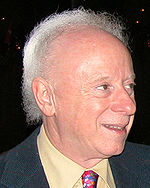 |
Joseph L. Goldstein Joseph L. Goldstein Joseph L. Goldstein from Kingstree, South Carolina is a Nobel Prize winning biochemist and geneticist, and a pioneer in the study of cholesterol metabolism.-Biography:... |
United States | ||
| 1986 |  |
Stanley Cohen | United States | "for their discoveries of growth factor Growth factor A growth factor is a naturally occurring substance capable of stimulating cellular growth, proliferation and cellular differentiation. Usually it is a protein or a steroid hormone. Growth factors are important for regulating a variety of cellular processes.... s" |
| Rita Levi-Montalcini Rita Levi-Montalcini Rita Levi-Montalcini , Knight Grand Cross is an Italian neurologist who, together with colleague Stanley Cohen, received the 1986 Nobel Prize in Physiology or Medicine for their discovery of nerve growth factor... |
Italy | |||
| 1988 | Gertrude B. Elion | United States | "for their discoveries of important principles for drug treatment Pharmacology Pharmacology is the branch of medicine and biology concerned with the study of drug action. More specifically, it is the study of the interactions that occur between a living organism and chemicals that affect normal or abnormal biochemical function... " |
|
| 1989 | .jpg) |
Harold E. Varmus Harold E. Varmus Harold Elliot Varmus is an American Nobel Prize-winning scientist and the 14th and current Director of the National Cancer Institute, a post he was appointed to by President Barack Obama. He was a co-recipient Harold Elliot Varmus (born December 18, 1939) is an American Nobel Prize-winning... |
United States | "for their discovery of the cellular origin of retroviral Retrovirus A retrovirus is an RNA virus that is duplicated in a host cell using the reverse transcriptase enzyme to produce DNA from its RNA genome. The DNA is then incorporated into the host's genome by an integrase enzyme. The virus thereafter replicates as part of the host cell's DNA... oncogene Oncogene An oncogene is a gene that has the potential to cause cancer. In tumor cells, they are often mutated or expressed at high levels.An oncogene is a gene found in the chromosomes of tumor cells whose activation is associated with the initial and continuing conversion of normal cells into cancer... s" |
| 1994 | Alfred G. Gilman Alfred G. Gilman Alfred Goodman Gilman is an American pharmacologist and biochemist. He shared the 1994 Nobel Prize in Physiology or Medicine with Martin Rodbell for their discoveries regarding G-proteins.... |
United States | "for their discovery of G-proteins and the role of these proteins in signal transduction Signal transduction Signal transduction occurs when an extracellular signaling molecule activates a cell surface receptor. In turn, this receptor alters intracellular molecules creating a response... in cells" |
|
.jpg) |
Martin Rodbell Martin Rodbell Martin Rodbell was an American biochemist and molecular endocrinologist who is best known for his discovery of G-proteins. He shared the 1994 Nobel Prize in Physiology or Medicine with Alfred G... |
|||
| 1997 | Stanley B. Prusiner Stanley B. Prusiner Stanley Ben Prusiner is an American neurologist and biochemist. Currently the director of the Institute for Neurodegenerative Diseases at University of California, San Francisco . Prusiner discovered prions, a class of infectious self-reproducing pathogens primarily or solely composed of protein... |
United States | "for his discovery of prion Prion A prion is an infectious agent composed of protein in a misfolded form. This is in contrast to all other known infectious agents which must contain nucleic acids . The word prion, coined in 1982 by Stanley B. Prusiner, is a portmanteau derived from the words protein and infection... s – a new biological principle of infection" |
|
| 1998 |  |
Robert F. Furchgott Robert F. Furchgott Robert Francis Furchgott was a Nobel Prize-winning American biochemist.Furchgott was born in Charleston, SC, to Arthur Furchgott and Pena Sorentrue Furchgott... |
United States | "for their discoveries concerning nitric oxide Nitric oxide Nitric oxide, also known as nitrogen monoxide, is a diatomic molecule with chemical formula NO. It is a free radical and is an important intermediate in the chemical industry... as a signalling molecule in the cardiovascular system" |
| 2000 |  |
Paul Greengard Paul Greengard Paul Greengard is an American neuroscientist best known for his work on the molecular and cellular function of neurons. In 2000, Greengard, Arvid Carlsson and Eric Kandel were awarded the Nobel Prize for Physiology or Medicine for their discoveries concerning signal transduction in the nervous... |
United States | "for their discoveries concerning signal transduction Signal transduction Signal transduction occurs when an extracellular signaling molecule activates a cell surface receptor. In turn, this receptor alters intracellular molecules creating a response... in the nervous system Nervous system The nervous system is an organ system containing a network of specialized cells called neurons that coordinate the actions of an animal and transmit signals between different parts of its body. In most animals the nervous system consists of two parts, central and peripheral. The central nervous... " |
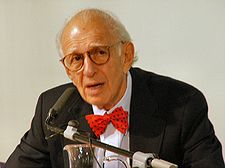 |
Eric Kandel | United States | ||
| 2002 | Sydney Brenner Sydney Brenner Sydney Brenner, CH FRS is a South African biologist and a 2002 Nobel prize in Physiology or Medicine laureate, shared with H... |
United Kingdom | "for their discoveries concerning 'genetic regulation of organ development and programmed cell death Apoptosis Apoptosis is the process of programmed cell death that may occur in multicellular organisms. Biochemical events lead to characteristic cell changes and death. These changes include blebbing, cell shrinkage, nuclear fragmentation, chromatin condensation, and chromosomal DNA fragmentation... '" |
|
| H. Robert Horvitz H. Robert Horvitz Howard Robert Horvitz is an American biologist best known for his research on the nematode worm Caenorhabditis elegans.-Life:Horvitz did his undergraduate studies at MIT in 1968, where he joined Alpha Epsilon Pi... |
United States | |||
| 2004 | Richard Axel Richard Axel Richard Axel is an American neuroscientist whose work on the olfactory system won him and Linda B. Buck, a former post-doctoral scientist in his research group, the Nobel Prize in Physiology or Medicine in 2004.... |
United States | "for their discoveries of odorant receptors and the organization of the olfactory system Olfactory system The olfactory system is the sensory system used for olfaction, or the sense of smell. Most mammals and reptiles have two distinct parts to their olfactory system: a main olfactory system and an accessory olfactory system. The main olfactory system detects volatile, airborne substances, while the... " |
|
| 2006 |  |
Andrew Fire Andrew Fire Andrew Zachary Fire is an American biologist and professor of pathology and of genetics at the Stanford University School of Medicine. He was awarded the 2006 Nobel Prize for Physiology or Medicine, along with Craig C. Mello, for the discovery of RNA interference... |
United States | "for his discovery of RNA interference RNA interference RNA interference is a process within living cells that moderates the activity of their genes. Historically, it was known by other names, including co-suppression, post transcriptional gene silencing , and quelling. Only after these apparently unrelated processes were fully understood did it become... – gene silencing by double-stranded RNA" |
| 2011 | Ralph M. Steinman Ralph M. Steinman Ralph Marvin Steinman was a Canadian immunologist and cell biologist at Rockefeller University, who in 1973 coined the term dendritic cells while working as a postdoc in the lab of Zanvil A. Cohn, also at Rockefeller University.... |
Canada | for "his discovery of the dendritic cell Dendritic cell Dendritic cells are immune cells forming part of the mammalian immune system. Their main function is to process antigen material and present it on the surface to other cells of the immune system. That is, dendritic cells function as antigen-presenting cells... and its role in adaptive immunity" |
|
| Bruce Beutler | United States | |||
Physics
| Year | Laureate | Country | Rationale | |
|---|---|---|---|---|
| 1907 |  |
Albert Abraham Michelson Albert Abraham Michelson Albert Abraham Michelson was an American physicist known for his work on the measurement of the speed of light and especially for the Michelson-Morley experiment. In 1907 he received the Nobel Prize in Physics... |
United States | "for his optical precision instruments and the spectroscopic and metrological investigations carried out with their aid" |
| 1908 |  |
Gabriel Lippmann Gabriel Lippmann Jonas Ferdinand Gabriel Lippmann was a Franco-Luxembourgish physicist and inventor, and Nobel laureate in physics for his method of reproducing colours photographically based on the phenomenon of interference.... |
France | "for his method of reproducing colours photographically Lippmann plate Gabriel Lippmann conceived a two-step method to record and reproduce colours, known as:* direct photochromes,* interference photochromes,* Lippmann photochromes,* Photography in natural colours by direct exposure in the camera... based on the phenomenon of interference" |
| 1921 | 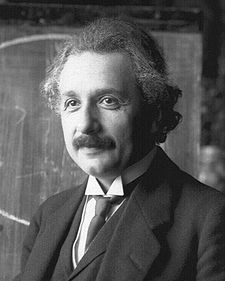 |
Albert Einstein Albert Einstein Albert Einstein was a German-born theoretical physicist who developed the theory of general relativity, effecting a revolution in physics. For this achievement, Einstein is often regarded as the father of modern physics and one of the most prolific intellects in human history... |
Germany | "for his services to Theoretical Physics, and especially for his discovery of the law of the photoelectric effect Photoelectric effect In the photoelectric effect, electrons are emitted from matter as a consequence of their absorption of energy from electromagnetic radiation of very short wavelength, such as visible or ultraviolet light. Electrons emitted in this manner may be referred to as photoelectrons... " |
| 1922 |  |
Niels Bohr Niels Bohr Niels Henrik David Bohr was a Danish physicist who made foundational contributions to understanding atomic structure and quantum mechanics, for which he received the Nobel Prize in Physics in 1922. Bohr mentored and collaborated with many of the top physicists of the century at his institute in... |
Denmark | "for his services in the investigation of the structure of atoms and of the radiation emanating from them" |
| 1925 |  |
James Franck James Franck James Franck was a German Jewish physicist and Nobel laureate.-Biography:Franck was born to Jacob Franck and Rebecca Nachum Drucker. Franck completed his Ph.D... |
Germany | "for their discovery of the laws governing the impact of an electron Electron The electron is a subatomic particle with a negative elementary electric charge. It has no known components or substructure; in other words, it is generally thought to be an elementary particle. An electron has a mass that is approximately 1/1836 that of the proton... upon an atom" |
| Gustav Hertz Gustav Ludwig Hertz Gustav Ludwig Hertz was a German experimental physicist and Nobel Prize winner, and a nephew of Heinrich Rudolf Hertz.-Biography:... |
Germany | |||
| 1943 | Otto Stern Otto Stern Otto Stern was a German physicist and Nobel laureate in physics.-Biography:Stern was born in Sohrau, now Żory in the German Empire's Kingdom of Prussia and studied at Breslau, now Wrocław in Lower Silesia.... |
United States | "for his contribution to the development of the molecular ray method and his discovery of the magnetic moment Magnetic moment The magnetic moment of a magnet is a quantity that determines the force that the magnet can exert on electric currents and the torque that a magnetic field will exert on it... of the proton Proton The proton is a subatomic particle with the symbol or and a positive electric charge of 1 elementary charge. One or more protons are present in the nucleus of each atom, along with neutrons. The number of protons in each atom is its atomic number.... " |
|
| 1944 |  |
Isidor Isaac Rabi Isidor Isaac Rabi Isidor Isaac Rabi was a Galician-born American physicist and Nobel laureate recognized in 1944 for his discovery of nuclear magnetic resonance.-Early years:... |
United States | "for his resonance method for recording the magnetic properties of atomic nuclei" |
| 1945 |  |
Wolfgang Pauli | Austria | "for the discovery of the Exclusion Principle, also called the Pauli principle" |
| 1952 |  |
Felix Bloch Felix Bloch Felix Bloch was a Swiss physicist, working mainly in the U.S.-Life and work:Bloch was born in Zürich, Switzerland to Jewish parents Gustav and Agnes Bloch. He was educated there and at the Eidgenössische Technische Hochschule, also in Zürich. Initially studying engineering he soon changed to physics... |
United States | "for their development of new methods for nuclear magnetic precision measurements and discoveries in connection therewith" |
| 1954 |  |
Max Born Max Born Max Born was a German-born physicist and mathematician who was instrumental in the development of quantum mechanics. He also made contributions to solid-state physics and optics and supervised the work of a number of notable physicists in the 1920s and 30s... |
United Kingdom | "for his fundamental research in quantum mechanics Quantum mechanics Quantum mechanics, also known as quantum physics or quantum theory, is a branch of physics providing a mathematical description of much of the dual particle-like and wave-like behavior and interactions of energy and matter. It departs from classical mechanics primarily at the atomic and subatomic... , especially for his statistical interpretation of the wavefunction" |
| 1958 |  |
Ilya Frank Ilya Frank Ilya Mikhailovich Frank was a Soviet winner of the Nobel Prize for Physics in 1958 jointly with Pavel Alekseyevich Cherenkov and Igor Y. Tamm, also of the Soviet Union. He received the award for his work in explaining the phenomenon of Cherenkov radiation... |
Soviet Union | "for the discovery and the interpretation of the Cherenkov effect" |
| Igor Tamm Igor Tamm Igor Yevgenyevich Tamm was a Soviet physicist and Nobel laureate who received most prestigious Nobel Prize in Physics, jointly with Pavel Alekseyevich Cherenkov and Ilya Frank, for the discovery of Cherenkov radiation, made in 1934.-Biography:Tamm was born in Vladivostok, Russian Empire , in a... |
Soviet Union | |||
| 1959 | Emilio Gino Segrè Emilio G. Segrè Emilio Gino Segrè was an Italian-born, naturalized American, physicist and Nobel laureate in physics, who with Owen Chamberlain, discovered antiprotons, a sub-atomic antiparticle.-Biography:... |
Italy | "for their discovery of the antiproton Antiproton The antiproton is the antiparticle of the proton. Antiprotons are stable, but they are typically short-lived since any collision with a proton will cause both particles to be annihilated in a burst of energy.... " |
|
| 1960 | 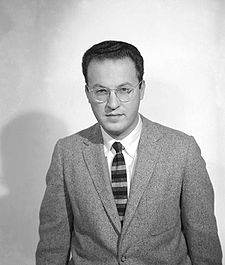 |
Donald A. Glaser Donald A. Glaser Donald Arthur Glaser , is an American physicist, neurobiologist, and Nobel Prize in Physics laureate for his invention of the Bubble chamber used in subatomic particle physics.... |
United States | "for the invention of the bubble chamber Bubble chamber A bubble chamber is a vessel filled with a superheated transparent liquid used to detect electrically charged particles moving through it. It was invented in 1952 by Donald A. Glaser, for which he was awarded the 1960 Nobel Prize in Physics... " |
| 1961 | 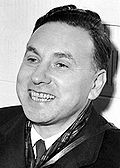 |
Robert Hofstadter Robert Hofstadter Robert Hofstadter was an American physicist. He was the joint winner of the 1961 Nobel Prize in Physics "for his pioneering studies of electron scattering in atomic nuclei and for his consequent discoveries concerning the structure of nucleons."-Biography :Born in New York City, he entered City... |
United States | "for his pioneering studies of electron scattering in atomic nuclei and for his thereby achieved discoveries concerning the structure of the nucleons" |
| 1962 | Lev Landau Lev Landau Lev Davidovich Landau was a prominent Soviet physicist who made fundamental contributions to many areas of theoretical physics... |
Soviet Union | "for his pioneering theories for condensed matter Condensed Matter Condensed matter may refer to several things*Condensed matter physics, the study of the physical properties of condensed phases of matter*European Physical Journal B: Condensed Matter and Complex Systems, a scientific journal published by EDP sciences... , especially liquid helium Liquid helium Helium exists in liquid form only at extremely low temperatures. The boiling point and critical point depend on the isotope of the helium; see the table below for values. The density of liquid helium-4 at its boiling point and 1 atmosphere is approximately 0.125 g/mL Helium-4 was first liquefied... " |
|
| 1963 | 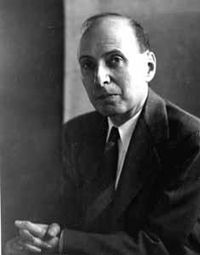 |
Eugene Wigner | United States | "for his contributions to the theory of the atomic nucleus and the elementary particles, particularly through the discovery and application of fundamental symmetry principles" |
| 1965 | Richard Feynman Richard Feynman Richard Phillips Feynman was an American physicist known for his work in the path integral formulation of quantum mechanics, the theory of quantum electrodynamics and the physics of the superfluidity of supercooled liquid helium, as well as in particle physics... |
United States | "for their fundamental work in quantum electrodynamics Quantum electrodynamics Quantum electrodynamics is the relativistic quantum field theory of electrodynamics. In essence, it describes how light and matter interact and is the first theory where full agreement between quantum mechanics and special relativity is achieved... , with deep-ploughing consequences for the physics of elementary particles" |
|
 |
Julian Schwinger Julian Schwinger Julian Seymour Schwinger was an American theoretical physicist. He is best known for his work on the theory of quantum electrodynamics, in particular for developing a relativistically invariant perturbation theory, and for renormalizing QED to one loop order.Schwinger is recognized as one of the... |
United States | ||
| 1967 |  |
Hans Bethe Hans Bethe Hans Albrecht Bethe was a German-American nuclear physicist, and Nobel laureate in physics for his work on the theory of stellar nucleosynthesis. A versatile theoretical physicist, Bethe also made important contributions to quantum electrodynamics, nuclear physics, solid-state physics and... |
United States | "for his contributions to the theory of nuclear reactions, especially his discoveries concerning the energy production in star Star A star is a massive, luminous sphere of plasma held together by gravity. At the end of its lifetime, a star can also contain a proportion of degenerate matter. The nearest star to Earth is the Sun, which is the source of most of the energy on Earth... s" |
| 1969 | 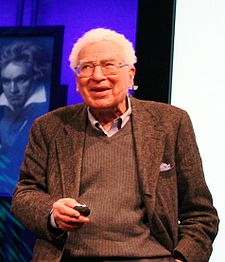 |
Murray Gell-Mann Murray Gell-Mann Murray Gell-Mann is an American physicist and linguist who received the 1969 Nobel Prize in physics for his work on the theory of elementary particles... |
United States | "for his contributions and discoveries concerning the classification of elementary particles and their interactions" |
| 1971 | Dennis Gabor Dennis Gabor Dennis Gabor CBE, FRS was a Hungarian-British electrical engineer and inventor, most notable for inventing holography, for which he later received the 1971 Nobel Prize in Physics.... |
United Kingdom | "for his invention and development of the holographic method Holography Holography is a technique that allows the light scattered from an object to be recorded and later reconstructed so that when an imaging system is placed in the reconstructed beam, an image of the object will be seen even when the object is no longer present... " |
|
| 1972 | Leon Cooper Leon Cooper Leon N Cooper is an American physicist and Nobel Prize laureate, who with John Bardeen and John Robert Schrieffer, developed the BCS theory of superconductivity... |
United States | "for his jointly developed theory of superconductivity Superconductivity Superconductivity is a phenomenon of exactly zero electrical resistance occurring in certain materials below a characteristic temperature. It was discovered by Heike Kamerlingh Onnes on April 8, 1911 in Leiden. Like ferromagnetism and atomic spectral lines, superconductivity is a quantum... , usually called the BCS-theory" |
|
| 1973 | Brian David Josephson Brian David Josephson Brian David Josephson, FRS is a Welsh physicist. He became a Nobel Prize laureate in 1973 for the prediction of the eponymous Josephson effect.... |
United Kingdom | "for his theoretical predictions of the properties of a supercurrent through a tunnel barrier, in particular those phenomena which are generally known as the Josephson effect Josephson effect The Josephson effect is the phenomenon of supercurrent across two superconductors coupled by a weak link... " |
|
| 1975 | Ben Roy Mottelson Ben Roy Mottelson Benjamin Roy Mottelson is an American-born Danish nuclear physicist. He won the 1975 Nobel Prize in Physics for his work on the non-spherical geometry of atomic nuclei.... |
Denmark | "for the discovery of the connection between collective motion and particle motion in atomic nuclei and the development of the theory of the structure of the atomic nucleus based on this connection" | |
| 1976 |  |
Burton Richter Burton Richter Burton Richter is a Nobel Prize-winning American physicist. He led the Stanford Linear Accelerator Center team which co-discovered the J/ψ meson in 1974, alongside the Brookhaven National Laboratory team led by Samuel Ting. This discovery was part of the so-called November Revolution of particle... |
United States | "for his pioneering work in the discovery of a heavy elementary particle of a new kind" |
| 1978 | 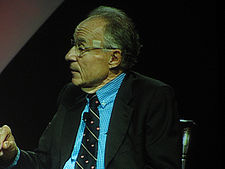 |
Arno Allan Penzias Arno Allan Penzias Arno Allan Penzias is an American physicist and Nobel laureate in physics.-Early life and education:Penzias was born in Munich, Germany. At age six he was among the Jewish children evacuated to Britain as part of the Kindertransport rescue operation... |
United States | "for his discovery of cosmic microwave background radiation Cosmic microwave background radiation In cosmology, cosmic microwave background radiation is thermal radiation filling the observable universe almost uniformly.... " |
| 1979 |  |
Sheldon Lee Glashow Sheldon Lee Glashow Sheldon Lee Glashow is a Nobel Prize winning American theoretical physicist. He is the Metcalf Professor of Mathematics and Physics at Boston University.-Birth and education:... |
United States | "for their contributions to the theory of the unified weak and electromagnetic interaction between elementary particles, including, inter alia, the prediction of the weak neutral current" |
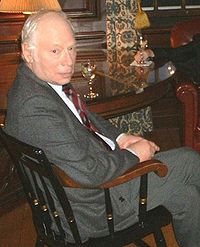 |
Steven Weinberg Steven Weinberg Steven Weinberg is an American theoretical physicist and Nobel laureate in Physics for his contributions with Abdus Salam and Sheldon Glashow to the unification of the weak force and electromagnetic interaction between elementary particles.... |
United States | ||
| 1987 | Karl Alexander Müller Karl Alexander Müller Karl Alexander Müller is a Swiss physicist and Nobel laureate. He received the Nobel Prize in Physics in 1987 with Johannes Georg Bednorz for their work in superconductivity in ceramic materials.-Biography:... |
Switzerland | "for their important breakthrough in the discovery of superconductivity in ceramic materials" | |
| 1988 |  |
Leon M. Lederman Leon M. Lederman Leon Max Lederman is an American experimental physicist and Nobel Prize in Physics laureate for his work with neutrinos. He is Director Emeritus of Fermi National Accelerator Laboratory in Batavia, Illinois, USA... |
United States | "for the neutrino Neutrino A neutrino is an electrically neutral, weakly interacting elementary subatomic particle with a half-integer spin, chirality and a disputed but small non-zero mass. It is able to pass through ordinary matter almost unaffected... beam method and the demonstration of the doublet structure of the lepton Lepton A lepton is an elementary particle and a fundamental constituent of matter. The best known of all leptons is the electron which governs nearly all of chemistry as it is found in atoms and is directly tied to all chemical properties. Two main classes of leptons exist: charged leptons , and neutral... s through the discovery of the muon neutrino" |
| Melvin Schwartz Melvin Schwartz Melvin Schwartz was an American physicist. He shared the 1988 Nobel Prize in Physics with Leon M. Lederman and Jack Steinberger for their development of the neutrino beam method and their demonstration of the doublet structure of the leptons through the discovery of the muon neutrino.He grew up in... |
United States | |||
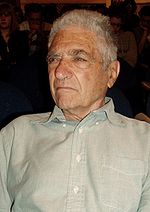 |
Jack Steinberger Jack Steinberger Jack Steinberger is a German-American physicist currently residing near Geneva, Switzerland. He co-discovered the muon neutrino, along with Leon Lederman and Melvin Schwartz, for which they were given the 1988 Nobel Prize in Physics.-Life:... |
United States | ||
| 1990 | Jerome Isaac Friedman Jerome Isaac Friedman Jerome Isaac Friedman is an American physicist. He was born in Chicago, Illinois to parents who emigrated to the US from Russia, and excelled particularly in art while growing up... |
United States | "for his pioneering investigations concerning deep inelastic scattering Deep Inelastic Scattering Deep inelastic scattering is the name given to a process used to probe the insides of hadrons , using electrons, muons and neutrinos. It provided the first convincing evidence of the reality of quarks, which up until that point had been considered by many to be a purely mathematical phenomenon... of electrons on protons and bound neutrons, which have been of essential importance for the development of the quark model Quark model In physics, the quark model is a classification scheme for hadrons in terms of their valence quarks—the quarks and antiquarks which give rise to the quantum numbers of the hadrons.... in particle physics" |
|
| 1992 | Georges Charpak Georges Charpak Georges Charpak was a French physicist who was awarded the Nobel Prize in Physics in 1992.-Life:Georges Charpak was born to Jewish family in the village of Dąbrowica in Poland . Charpak's family moved from Poland to Paris when he was seven years old... |
France | "for his invention and development of particle detectors, in particular the multiwire proportional chamber" | |
| 1995 | 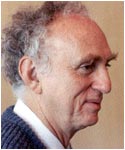 |
Martin Lewis Perl Martin Lewis Perl Martin Lewis Perl is an American physicist, who won the Nobel Prize in Physics in 1995 for his discovery of the tau lepton.His parents were Jewish emigrants to the US from the Polish area of Russia.... |
United States | "for the discovery of the tau lepton Tau lepton The tau , also called the tau lepton, tau particle or tauon, is an elementary particle similar to the electron, with negative electric charge and a spin of . Together with the electron, the muon, and the three neutrinos, it is classified as a lepton... " and "for pioneering experimental contributions to lepton Lepton A lepton is an elementary particle and a fundamental constituent of matter. The best known of all leptons is the electron which governs nearly all of chemistry as it is found in atoms and is directly tied to all chemical properties. Two main classes of leptons exist: charged leptons , and neutral... physics" |
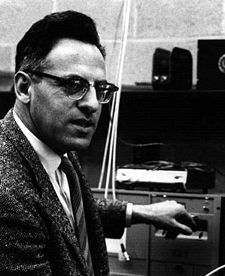 |
Frederick Reines Frederick Reines Frederick Reines was an American physicist. He was awarded the 1995 Nobel Prize in Physics for his co-detection of the neutrino with Clyde Cowan in the neutrino experiment, and may be the only scientist in history "so intimately associated with the discovery of an elementary particle and the... |
United States | "for the detection of the neutrino Neutrino A neutrino is an electrically neutral, weakly interacting elementary subatomic particle with a half-integer spin, chirality and a disputed but small non-zero mass. It is able to pass through ordinary matter almost unaffected... " and "for pioneering experimental contributions to lepton Lepton A lepton is an elementary particle and a fundamental constituent of matter. The best known of all leptons is the electron which governs nearly all of chemistry as it is found in atoms and is directly tied to all chemical properties. Two main classes of leptons exist: charged leptons , and neutral... physics" |
|
| 1996 | David Morris Lee David Lee (physicist) David Morris Lee is an American physicist who shared the 1996 Nobel Prize in Physics with Robert C. Richardson and Douglas Osheroff "for their discovery of superfluidity in helium-3"-Personal life:... |
United States | "for their discovery of superfluid Superfluid Superfluidity is a state of matter in which the matter behaves like a fluid without viscosity and with extremely high thermal conductivity. The substance, which appears to be a normal liquid, will flow without friction past any surface, which allows it to continue to circulate over obstructions and... ity in helium-3 Helium-3 Helium-3 is a light, non-radioactive isotope of helium with two protons and one neutron. It is rare on Earth, and is sought for use in nuclear fusion research... " |
|
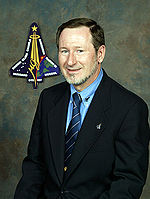 |
Douglas D. Osheroff Douglas D. Osheroff Douglas Dean Osheroff is an American physicist known for his work in experimental condensed matter physics, in particular for his co-discovery of superfluidity in Helium-3. For his contributions he shared the 1996 Nobel Prize in Physics along with David Lee and Robert C... |
United States | ||
| 1997 |  |
Claude Cohen-Tannoudji Claude Cohen-Tannoudji Claude Cohen-Tannoudji is a French physicist and Nobel Laureate. He shared the 1997 Nobel Prize in Physics with Steven Chu and William Daniel Phillips for research in methods of laser cooling and trapping atoms... |
France | "for development of methods to cool and trap atoms with laser light" |
| 2000 | 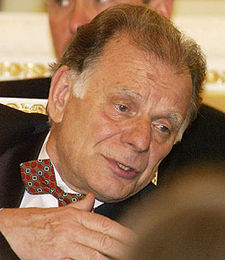 |
Zhores Alferov | Russia | "for developing semiconductor Semiconductor A semiconductor is a material with electrical conductivity due to electron flow intermediate in magnitude between that of a conductor and an insulator. This means a conductivity roughly in the range of 103 to 10−8 siemens per centimeter... heterostructures used in high-speed- and optoelectronics Optoelectronics Optoelectronics is the study and application of electronic devices that source, detect and control light, usually considered a sub-field of photonics. In this context, light often includes invisible forms of radiation such as gamma rays, X-rays, ultraviolet and infrared, in addition to visible light... " |
| 2003 |  |
Alexei Alexeyevich Abrikosov Alexei Alexeyevich Abrikosov Alexei Alexeyevich Abrikosov is a Soviet and Russian theoretical physicist whose main contributions are in the field of condensed matter physics. He was awarded the Nobel Prize in Physics in 2003.- Biography :... |
Russia United States |
"for pioneering contributions to the theory of superconductors Superconductivity Superconductivity is a phenomenon of exactly zero electrical resistance occurring in certain materials below a characteristic temperature. It was discovered by Heike Kamerlingh Onnes on April 8, 1911 in Leiden. Like ferromagnetism and atomic spectral lines, superconductivity is a quantum... and superfluids" |
| Vitaly Ginzburg Vitaly Ginzburg Vitaly Lazarevich Ginzburg ForMemRS was a Soviet theoretical physicist, astrophysicist, Nobel laureate, a member of the Russian Academy of Sciences and one of the fathers of Soviet hydrogen bomb... |
Russia | |||
| 2004 |  |
David Gross David Gross David Jonathan Gross is an American particle physicist and string theorist. Along with Frank Wilczek and David Politzer, he was awarded the 2004 Nobel Prize in Physics for their discovery of asymptotic freedom. He is currently the director and holder of the Frederick W... |
United States | "for the discovery of asymptotic freedom Asymptotic freedom In physics, asymptotic freedom is a property of some gauge theories that causes interactions between particles to become arbitrarily weak at energy scales that become arbitrarily large, or, equivalently, at length scales that become arbitrarily small .Asymptotic freedom is a feature of quantum... in the theory of the strong interaction Strong interaction In particle physics, the strong interaction is one of the four fundamental interactions of nature, the others being electromagnetism, the weak interaction and gravitation. As with the other fundamental interactions, it is a non-contact force... " |
| H. David Politzer | United States | |||
| 2005 |  |
Roy J. Glauber Roy J. Glauber Roy Jay Glauber is an American theoretical physicist. He is the Mallinckrodt Professor of Physics at Harvard University and Adjunct Professor of Optical Sciences at the University of Arizona... |
United States | "for his contribution to the quantum theory of optical coherence Coherence (physics) In physics, coherence is a property of waves that enables stationary interference. More generally, coherence describes all properties of the correlation between physical quantities of a wave.... " |
| 2011 | Adam Riess Adam Riess Adam Guy Riess is an American astrophysicist at Johns Hopkins University and the Space Telescope Science Institute and is widely known for his research in using supernovae as Cosmological Probes. Riess shared both the 2006 Shaw Prize in Astronomy and the 2011 Nobel Prize in Physics with Saul... |
United States | "for providing evidence that the expansion of the universe is accelerating" | |
| Saul Perlmutter Saul Perlmutter Saul Perlmutter is an American astrophysicist at the Lawrence Berkeley National Laboratory and a professor of physics at the University of California, Berkeley. He is a member of the American Academy of Arts & Sciences, and was elected a Fellow of the American Association for the Advancement of... |
United States | |||
Peace
| Year | Laureate | Country | Rationale | |
|---|---|---|---|---|
| 1911 | 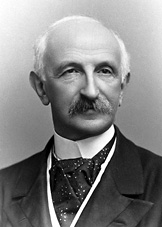 |
Tobias Michael Carel Asser Tobias Michael Carel Asser Tobias Michael Carel Asser was a Dutch lawyer and legal scholar of Jewish background, cowinner of the Nobel Prize for Peace in 1911 for his role in the formation of the Permanent Court of Arbitration at the first Hague peace conference... |
The Netherlands | "Initiator of the Conferences on International Private Law at the Hague; Cabinet Minister; Lawyer" |
 |
Alfred Hermann Fried Alfred Hermann Fried Alfred Hermann Fried was an Austrian Jewish pacifist, publicist, journalist, co-founder of the German peace movement, and winner of the Nobel Prize for Peace in 1911.- Life :... |
Austria | "Journalist; Founder of Die Friedenswarte" | |
| 1968 | 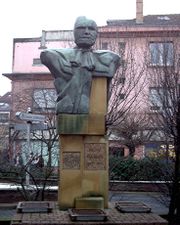 |
René Cassin René Cassin René Samuel Cassin was a French jurist, law professor and judge. A soldier in World War I, he later went on to form the Union Fédérale, a leftist, pacifist Veterans organisation... |
France | "President of the European Court for Human Rights European Court of Human Rights The European Court of Human Rights in Strasbourg is a supra-national court established by the European Convention on Human Rights and hears complaints that a contracting state has violated the human rights enshrined in the Convention and its protocols. Complaints can be brought by individuals or... " |
| 1973 |  |
Henry A. Kissinger Henry Kissinger Heinz Alfred "Henry" Kissinger is a German-born American academic, political scientist, diplomat, and businessman. He is a recipient of the Nobel Peace Prize. He served as National Security Advisor and later concurrently as Secretary of State in the administrations of Presidents Richard Nixon and... |
United States | "For the 1973 Paris agreement Paris Peace Accords The Paris Peace Accords of 1973 intended to establish peace in Vietnam and an end to the Vietnam War, ended direct U.S. military involvement, and temporarily stopped the fighting between North and South Vietnam... intended to bring about a cease-fire in the Vietnam War and a withdrawal of the American forces" |
| 1978 |  |
Menachem Begin Menachem Begin ' was a politician, founder of Likud and the sixth Prime Minister of the State of Israel. Before independence, he was the leader of the Zionist militant group Irgun, the Revisionist breakaway from the larger Jewish paramilitary organization Haganah. He proclaimed a revolt, on 1 February 1944,... |
Israel Israel The State of Israel is a parliamentary republic located in the Middle East, along the eastern shore of the Mediterranean Sea... |
"for the Camp David Agreement, which brought about a negotiated peace between Egypt and Israel" |
| 1986 |  |
Elie Wiesel Elie Wiesel Sir Eliezer "Elie" Wiesel KBE; born September 30, 1928) is a Hungarian-born Jewish-American writer, professor, political activist, Nobel Laureate, and Holocaust survivor. He is the author of 57 books, including Night, a work based on his experiences as a prisoner in the Auschwitz, Buna, and... |
United States | "Chairman of "The President's Commission on the Holocaust"" |
| 1994 | _cropped.jpg) |
Yitzhak Rabin Yitzhak Rabin ' was an Israeli politician, statesman and general. He was the fifth Prime Minister of Israel, serving two terms in office, 1974–77 and 1992 until his assassination in 1995.... |
Israel | "to honour a political act which called for great courage on both sides, and which has opened up opportunities for a new development towards fraternity in the Middle East." |
 |
Shimon Peres Shimon Peres GCMG is the ninth President of the State of Israel. Peres served twice as the eighth Prime Minister of Israel and once as Interim Prime Minister, and has been a member of 12 cabinets in a political career spanning over 66 years... |
Israel | ||
| 1995 |  |
Joseph Rotblat Joseph Rotblat Sir Joseph Rotblat, KCMG, CBE, FRS , was a Polish-born, British-naturalised physicist.His work on nuclear fallout was a major contribution to the agreement of the Partial Test Ban Treaty... |
United Kingdom Poland |
"for his efforts to diminish the part played by nuclear arms in international politics and, in the longer run, to eliminate such arms" |
Economics
| Year | Laureate | Country | Rationale | |
|---|---|---|---|---|
| 1970 | Paul Samuelson Paul Samuelson Paul Anthony Samuelson was an American economist, and the first American to win the Nobel Memorial Prize in Economic Sciences. The Swedish Royal Academies stated, when awarding the prize, that he "has done more than any other contemporary economist to raise the level of scientific analysis in... |
United States | "for the scientific work through which he has developed static and dynamic economic theory and actively contributed to raising the level of analysis in economic science" | |
| 1971 | Simon Kuznets Simon Kuznets Simon Smith Kuznets was a Russian American economist at the Wharton School of the University of Pennsylvania who won the 1971 Nobel Memorial Prize in Economic Sciences "for his empirically founded interpretation of economic growth which has led to new and deepened insight into the economic and... |
United States | "for his empirically founded interpretation of economic growth which has led to new and deepened insight into the economic and social structure and process of development" | |
| 1972 | 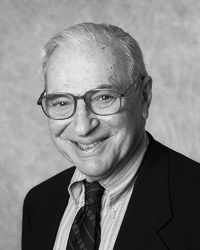 |
Kenneth Arrow Kenneth Arrow Kenneth Joseph Arrow is an American economist and joint winner of the Nobel Memorial Prize in Economics with John Hicks in 1972. To date, he is the youngest person to have received this award, at 51.... |
United States | "for his pioneering contributions to general economic equilibrium theory and welfare theory" |
| 1973 | Wassily Leontief Wassily Leontief Wassily Wassilyovich Leontief , was a Russian-American economist notable for his research on how changes in one economic sector may have an effect on other sectors. Leontief won the Nobel Committee's Nobel Memorial Prize in Economic Sciences in 1973, and three of his doctoral students have also... |
Russia Germany United States |
"for the development of the input-output method and for its application to important economic problems" | |
| 1975 | Leonid Kantorovich Leonid Kantorovich Leonid Vitaliyevich Kantorovich was a Soviet mathematician and economist, known for his theory and development of techniques for the optimal allocation of resources... |
Soviet Union | "for his contributions to the theory of optimum allocation of resources" | |
| 1976 | Milton Friedman Milton Friedman Milton Friedman was an American economist, statistician, academic, and author who taught at the University of Chicago for more than three decades... |
United States | "for his achievements in the fields of consumption analysis, monetary history and theory and for his demonstration of the complexity of stabilization policy" | |
| 1978 |  |
Herbert Simon Herbert Simon Herbert Alexander Simon was an American political scientist, economist, sociologist, and psychologist, and professor—most notably at Carnegie Mellon University—whose research ranged across the fields of cognitive psychology, cognitive science, computer science, public administration, economics,... |
United States | "for his pioneering research into the decision-making process within economic organizations" |
| 1980 | Lawrence Klein Lawrence Klein Lawrence Robert Klein is an American economist. For his work in creating computer models to forecast economic trends in the field of econometrics at the Wharton School of the University of Pennsylvania, he was awarded the Nobel Memorial Prize in Economic Sciences in 1980... |
United States | "for the creation of econometric models and the application to the analysis of economic fluctuations and economic policies" | |
| 1985 |  |
Franco Modigliani Franco Modigliani Franco Modigliani was an Italian economist at the MIT Sloan School of Management and MIT Department of Economics, and winner of the Nobel Memorial Prize in Economics in 1985.-Life and career:... |
Italy United States |
"for his pioneering analyses of saving and of financial markets" |
| 1987 | Robert Solow Robert Solow Robert Merton Solow is an American economist particularly known for his work on the theory of economic growth that culminated in the exogenous growth model named after him... |
United States | "for his contributions to the theory of economic growth"" | |
| 1990 | Harry Markowitz Harry Markowitz Harry Max Markowitz is an American economist and a recipient of the John von Neumann Theory Prize and the Nobel Memorial Prize in Economic Sciences.... |
United States | "for their pioneering work in the theory of financial economics"" | |
| Merton Miller Merton Miller Merton Howard Miller was the co-author of the Modigliani-Miller theorem which proposed the irrelevance of debt-equity structure. He shared the Nobel Memorial Prize in Economic Sciences in 1990, along with Harry Markowitz and William Sharpe... |
United States | |||
| 1992 |  |
Gary Becker Gary Becker Gary Stanley Becker is an American economist. He is a professor of economics, sociology at the University of Chicago and a professor at the Booth School of Business. He was awarded the Nobel Memorial Prize in Economic Sciences in 1992, and received the United States' Presidential Medal of Freedom... |
United States | "for having extended the domain of microeconomic analysis to a wide range of human behaviour and interaction, including nonmarket behaviour"" |
| 1993 |  |
Robert Fogel Robert Fogel Robert William Fogel is an American economic historian and scientist, and winner of the 1993 Nobel Memorial Prize in Economic Sciences. He is now the Charles R. Walgreen Distinguished Service Professor of American Institutions and director of the Center for Population Economics at the... |
United States | "for having renewed research in economic history by applying economic theory and quantitative methods in order to explain economic and institutional change" |
| 1994 | John Harsanyi John Harsanyi John Charles Harsanyi was a Hungarian-Australian-American economist and Nobel Memorial Prize in Economic Sciences winner.... |
Hungary | "for their pioneering analysis of equilibria in the theory of non-cooperative games" | |
| 1997 |  |
Myron Scholes Myron Scholes Myron Samuel Scholes is a Canadian-born American financial economist who is best known as one of the authors of the Black–Scholes equation. In 1997 he was awarded the Nobel Memorial Prize in Economic Sciences for a method to determine the value of derivatives... |
Canada | "for a new method to determine the value of derivatives" |
| 2001 | Joseph Stiglitz | United States | "for his analyses of markets with asymmetric information" | |
| 2002 |  |
Daniel Kahneman Daniel Kahneman Daniel Kahneman is an Israeli-American psychologist and Nobel laureate. He is notable for his work on the psychology of judgment and decision-making, behavioral economics and hedonic psychology.... |
Israel United States |
"for having integrated insights from psychological research into economic science, especially concerning human judgment and decision-making under uncertainty" |
| 2005 |  |
Robert Aumann Robert Aumann Robert John Aumann is an Israeli-American mathematician and a member of the United States National Academy of Sciences. He is a professor at the Center for the Study of Rationality in the Hebrew University of Jerusalem in Israel... |
Israel United States |
"for having enhanced our understanding of conflict and cooperation through game-theory Game theory Game theory is a mathematical method for analyzing calculated circumstances, such as in games, where a person’s success is based upon the choices of others... analysis" |
| 2007 |  |
Leonid Hurwicz Leonid Hurwicz Leonid "Leo" Hurwicz was a Russian-born American economist and mathematician. His nationality of origin was Polish. He was Jewish. He originated incentive compatibility and mechanism design, which show how desired outcomes are achieved in economics, social science and political science... |
United States | "For having laid the foundations of mechanism design Mechanism design Mechanism design is a field in game theory studying solution concepts for a class of private information games... theory" |
| Eric Maskin Eric Maskin Eric Stark Maskin is an American economist and Nobel laureate recognized with Leonid Hurwicz and Roger Myerson "for having laid the foundations of mechanism design theory." He is the Albert O... |
United States | |||
 |
Roger Myerson Roger Myerson Roger Bruce Myerson is an American economist and Nobel laureate recognized with Leonid Hurwicz and Eric Maskin for "having laid the foundations of mechanism design theory." A professor at the University of Chicago, he has made contributions as an economist, as an applied mathematician, and as a... |
United States | ||
| 2008 |  |
Paul Krugman Paul Krugman Paul Robin Krugman is an American economist, professor of Economics and International Affairs at the Woodrow Wilson School of Public and International Affairs at Princeton University, Centenary Professor at the London School of Economics, and an op-ed columnist for The New York Times... |
United States | "for his analysis of trade patterns and location of economic activity" |
| 2009 | Elinor Ostrom Elinor Ostrom Elinor Ostrom is an American political economist. She was awarded the 2009 Nobel Memorial Prize in Economic Sciences, which she shared with Oliver E. Williamson, for "her analysis of economic governance, especially the commons." She was the first, and to date, the only woman to win the prize in... |
United States | "for her analysis of economic governance, especially the commons" | |
Forced to decline prize
Only four laureates have been forced by authorities to decline the Nobel Prize. Three of them were (non-Jewish) Germans, who were prohibited from accepting the prize by Adolf HitlerAdolf Hitler
Adolf Hitler was an Austrian-born German politician and the leader of the National Socialist German Workers Party , commonly referred to as the Nazi Party). He was Chancellor of Germany from 1933 to 1945, and head of state from 1934 to 1945...
in 1938 and in 1939. The fourth was Boris Pasternak
Boris Pasternak
Boris Leonidovich Pasternak was a Russian language poet, novelist, and literary translator. In his native Russia, Pasternak's anthology My Sister Life, is one of the most influential collections ever published in the Russian language...
, a Russian Jew. Pasternak was named the winner of the prize for Literature in 1958. He initially accepted the award, but—after intense pressure from Soviet authorities—subsequently declined it.
Nobel Laureates Boulevard
The Israeli town of Rishon LeZion has a street in it dedicated to honoring all Jewish Nobel Laureates. The street, called Tayelet Hatnei Pras Nobel (Nobel Laureates Boulevard/Promenade), has a monument with attached plaque for each Nobel Laureate.Further reading
- Charpa, Ulrich; Deichmann, Ute. (eds.) (2007). Jews and Sciences in German Contexts: Case Studies From the 19th and 20th Centuries, Mohr Siebeck, pp. 23–25.
- Feldman, Burton (2001). The Nobel Prize: A History of Genius, Controversy, and Prestige, Arcade PublishingArcade PublishingArcade Publishing is an independent trade publishing company that started in 1988 in New York, USA. They are publishers of American and world fiction and non-fiction...
, pp. 407–10. - Julius, Anthony (1995). T. S. Eliot, Anti-Semitism, and Literary Form, Cambridge University PressCambridge University PressCambridge University Press is the publishing business of the University of Cambridge. Granted letters patent by Henry VIII in 1534, it is the world's oldest publishing house, and the second largest university press in the world...
, p. 266. - Lazarus, William P.; Sullivan, Mark. (2008). Comparative Religion For Dummies, Wiley Publishing, p. 45.
- Patai, Raphael (1996). The Jewish Mind, Wayne State University PressWayne State University PressWayne State University Press , founded in 1941, is a university press that is part of Wayne State University. It publishes under its own name and also the imprints Painted Turtle and Great Lakes Books....
, pp. 339–42. - Rubinstein, W. D. (1982). The Left, the Right and the Jews, Croom Helm, p. 63.
- Scharfstein, Sol (1999). Understanding Jewish Holidays and Customs: Historical and Contemporary, KTAV Publishing House, p. 168.
- Shalev, Baruch Aba (2005). 100 Years of Nobel Prizes, The Americas Group, first publishing in 2002.
- Weiss, Mosheh (2004). A Brief History of the Jewish People, Rowman & LittlefieldRowman & LittlefieldRowman & Littlefield Publishing Group is an independent publishing house founded in 1949. Under several imprints, the company offers scholarly books and journals for the academic market, as well as trade books. The company also owns a book distributor, National Book Network...
, pp. 216–17. - Zuckerman, Harriet (1996). Scientific Elite: Nobel Laureates in the United States, Transaction PublishersTransaction PublishersTransaction Publishers is a New Jersey-based publishing house that specializes in social sciences books. Some of its books have been published with the imprint "Transactions Publishers".-Overview:...
, originally publishing in 1977, pp. 71–78.

